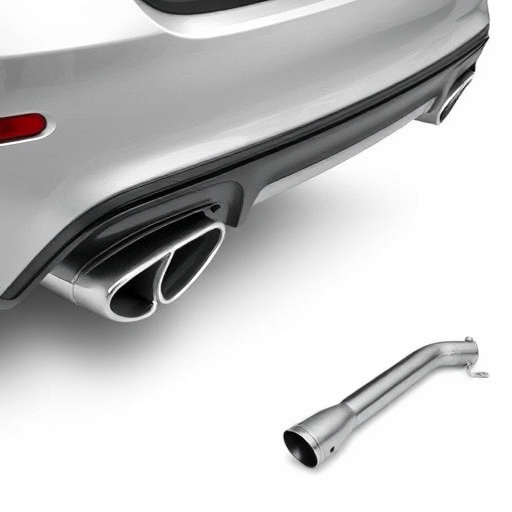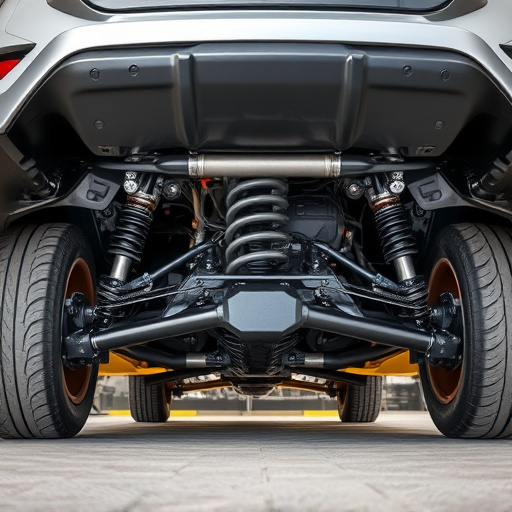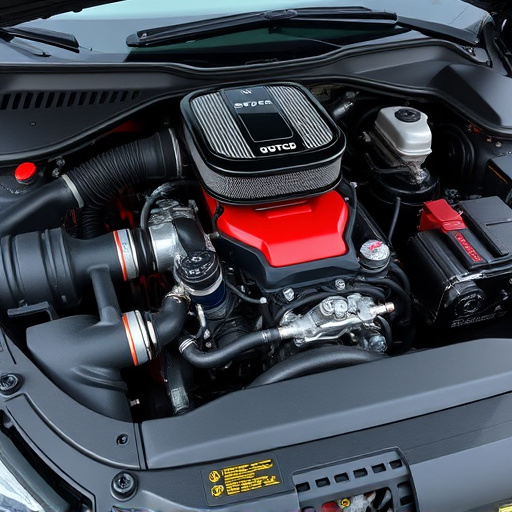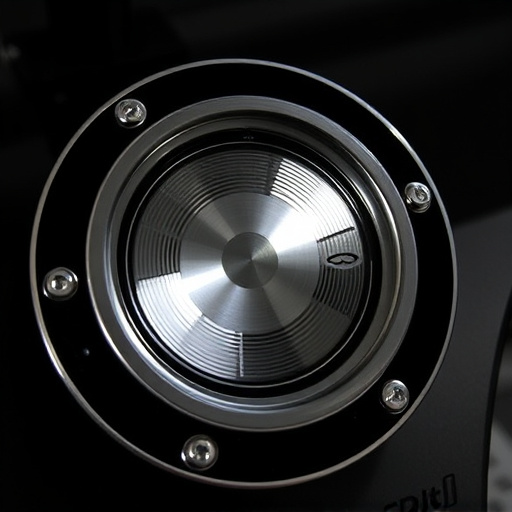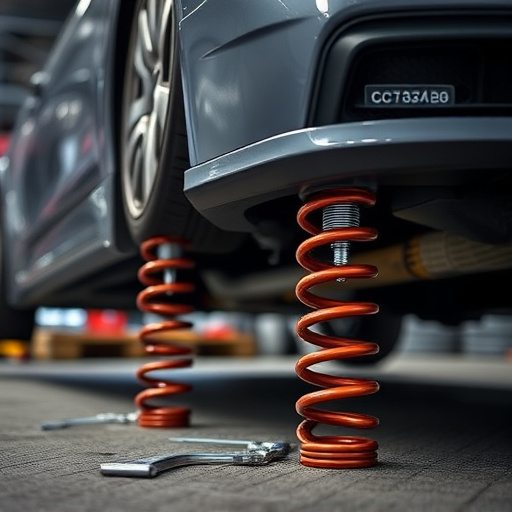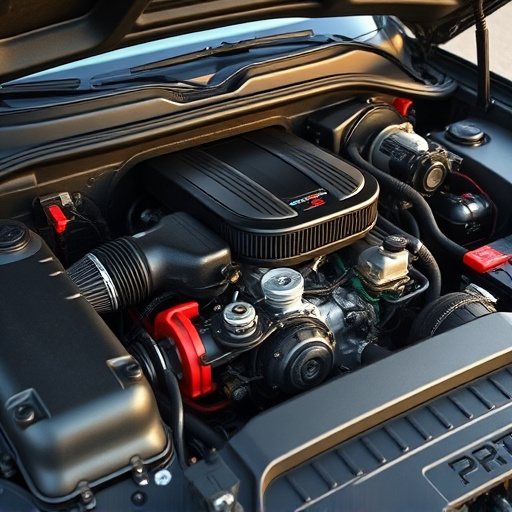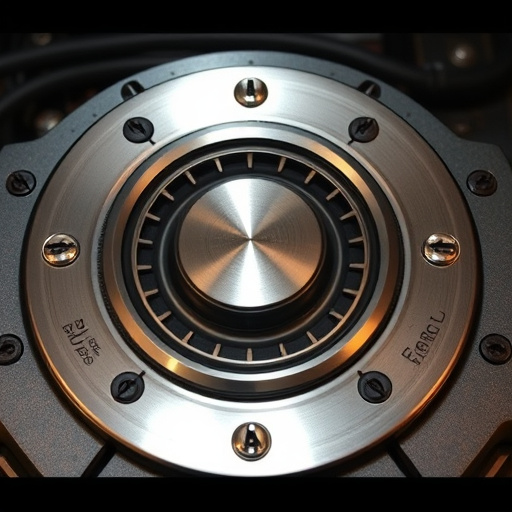The vehicle suspension system, critical for smooth rides and handling, includes springs, shock absorbers, control arms, and stabilizers. Spring stiffness affects load capacity and ride quality – stiffer springs enhance weight-carrying but firm up the ride, while softer springs offer comfort but limit cargo space. Vehicle suspension systems vary in type, with solid axis suspensions for lighter vehicles and independent suspensions for better control and heavier payloads. Tuning adjusts handling and load capacity based on vehicle purpose. Regular maintenance and upgrades, like high-quality shock absorbers and brakes, optimize load-carrying capabilities, ensuring better weight distribution, traction, and control for safe and efficient transportation.
The vehicle suspension system is a crucial component that significantly impacts overall load capacity. This article delves into the intricate relationship between these two elements, offering a comprehensive guide for drivers and enthusiasts alike. We’ll explore how different suspension types affect loading capabilities and provide valuable insights on optimizing load-carrying potential through upgradable components and maintenance practices. Understanding these factors ensures safer and more efficient cargo transportation.
- Understanding Vehicle Suspension Systems: The Basics
- How Suspension Type Affects Load Capacity: A Comprehensive Look
- Optimizing Load Carrying Capabilities: Upgrading and Maintenance Tips
Understanding Vehicle Suspension Systems: The Basics
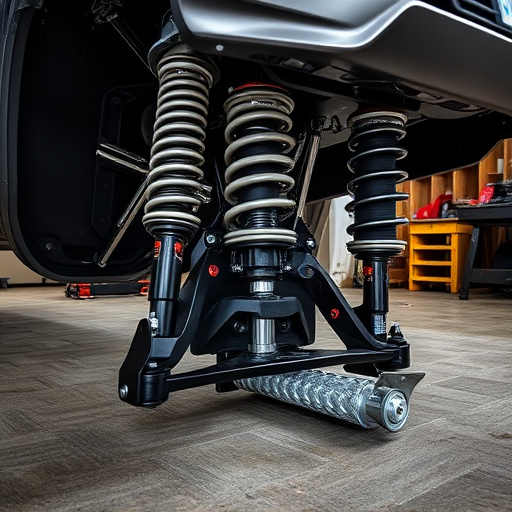
Vehicle suspension systems are a fundamental component that ensures a smooth ride and optimal vehicle handling. These systems are designed to absorb and distribute the forces encountered while driving, whether it’s over uneven terrain or navigating tight corners at high speeds. At its core, a suspension system comprises several key elements, including springs, shock absorbers (also known as dampers), control arms, and stabilizers. Springs provide the primary means of supporting the vehicle’s weight and controlling its movement, while shock absorbers help to minimize the up-and-down motion caused by road irregularities.
Understanding how these components interact is crucial when considering a vehicle’s load capacity. For instance, stiffer springs can increase the vehicle’s ability to carry heavier loads, but they also result in a firmer ride. Conversely, softer springs provide a smoother journey but may limit the amount of weight that can be safely transported. Additionally, performance upgrades such as muffler tips, air filter kits, and high-performance brakes often work in conjunction with the suspension system, further enhancing overall vehicle performance and load handling capabilities.
How Suspension Type Affects Load Capacity: A Comprehensive Look

The vehicle suspension system plays a pivotal role in dictating how much weight a car can carry safely. Different suspension types have distinct load-bearing capacities due to their structural design and elements. For instance, solid axis suspensions, common in lighter vehicles, offer straightforward stability but may struggle under heavy loads, as they rely on a single point of contact for support. In contrast, independent suspension systems, often found in modern cars, provide enhanced control and absorb impact more efficiently, enabling them to handle heavier payloads.
Furthermore, the type of suspension tuning can significantly influence load capacity. Sporty vehicles may prioritize agility and handling, leading to stiffer suspensions that excel at cornering but might limit cargo space. Conversely, trucks and SUVs equipped with more relaxed suspensions designed for comfort can carry larger loads comfortably, thanks to their ability to absorb road irregularities and distribute weight evenly across the vehicle. This highlights the crucial interplay between suspension type, tuning, and load capacity in determining a vehicle’s overall utility.
Optimizing Load Carrying Capabilities: Upgrading and Maintenance Tips
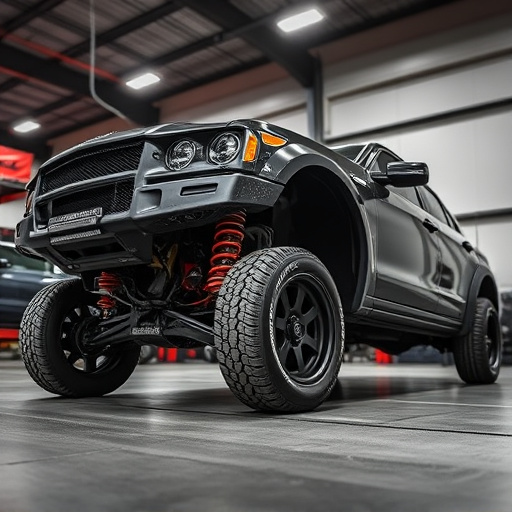
Optimizing a vehicle’s load carrying capabilities starts with understanding its suspension system. Regular maintenance and timely upgrades to this crucial component can significantly enhance a vehicle’s ability to tow or transport heavy loads smoothly. A well-maintained suspension system ensures better weight distribution, which translates into improved traction and control, especially during challenging driving conditions.
When upgrading, consider high-quality shock absorbers and springs designed for your specific vehicle type and intended use. Enhancing the suspension with performance brakes, upgraded intake components, or air filter kits can further boost overall performance. Regular checks for wear and tear, along with prompt replacement of faulty parts, are essential to maintaining optimal load capacity. This proactive approach will not only extend the life of your vehicle but also ensure safe and efficient transportation of your desired loads.
The vehicle suspension system plays a pivotal role in determining load capacity, offering a balance between comfort and functionality. By understanding the impact of different suspension types, drivers can optimize their vehicles’ carrying capabilities. Regular maintenance and strategic upgrades ensure that the suspension remains efficient, enhancing overall performance and safety when transporting loads. Investing in your vehicle’s suspension is a sensible step towards maximizing its potential.








